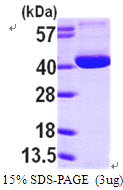order histories, retained contact details for faster checkout, review submissions, and special promotions.
Forgot password?
order histories, retained contact details for faster checkout, review submissions, and special promotions.
Locations
Orders Processing,
Shipping & Receiving,
Warehouse
2 Shaker Rd Suites
B001/B101
Shirley, MA 01464
Production Lab
Floor 6, Suite 620
20700 44th Avenue W
Lynnwood, WA 98036
Telephone Numbers
Tel: +1 (206) 374-1102
Fax: +1 (206) 577-4565
Contact Us
Additional Contact Details
order histories, retained contact details for faster checkout, review submissions, and special promotions.
Forgot password?
order histories, retained contact details for faster checkout, review submissions, and special promotions.
OGG1
8-oxoguanine DNA glycosylase
OGG1 is the enzyme responsible for the excision of 8-oxoguanine, a mutagenic base byproduct which occurs as a result of exposure to reactive oxygen. The action of this enzyme includes lyase activity for chain cleavage. Alternative splicing of the C-terminal region of this gene classifies splice variants into two major groups, type 1 and type 2, depending on the last exon of the sequence. Type 1 alternative splice variants end with exon 7 and type 2 end with exon 8. All variants share the N-terminal region in common, which contains a mitochondrial targeting signal that is essential for mitochondrial localization. Many alternative splice variants for this gene have been described, but the full-length nature for every variant has not been determined.
| Gene Name: | 8-oxoguanine DNA glycosylase |
| Synonyms: | OGG1, 8-oxoguanine DNA glycosylase, AP lyase, HMMH, N-glycosylase/DNA lyase, HOGG1, OGH1, OGG1 type 1f, MMH, MUTM |
| Target Sequences: | NM_016819 NP_058212.1 O15527 |
Publications (47)


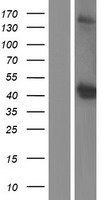
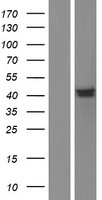
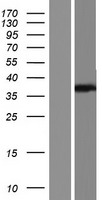
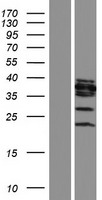
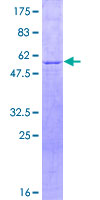


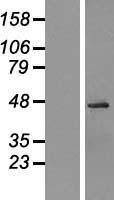






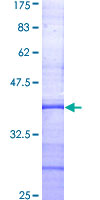
If you do not find the reagent or information you require, please contact Customer.Support@LSBio.com to inquire about additional products in development.

